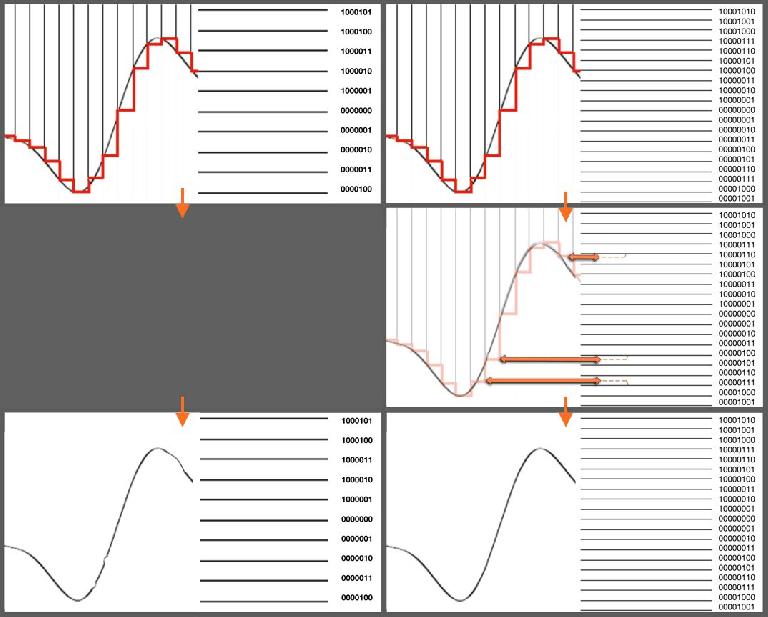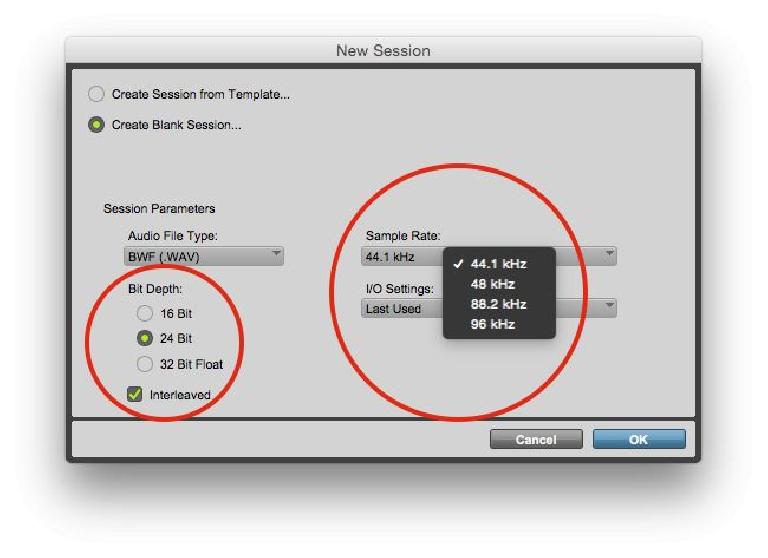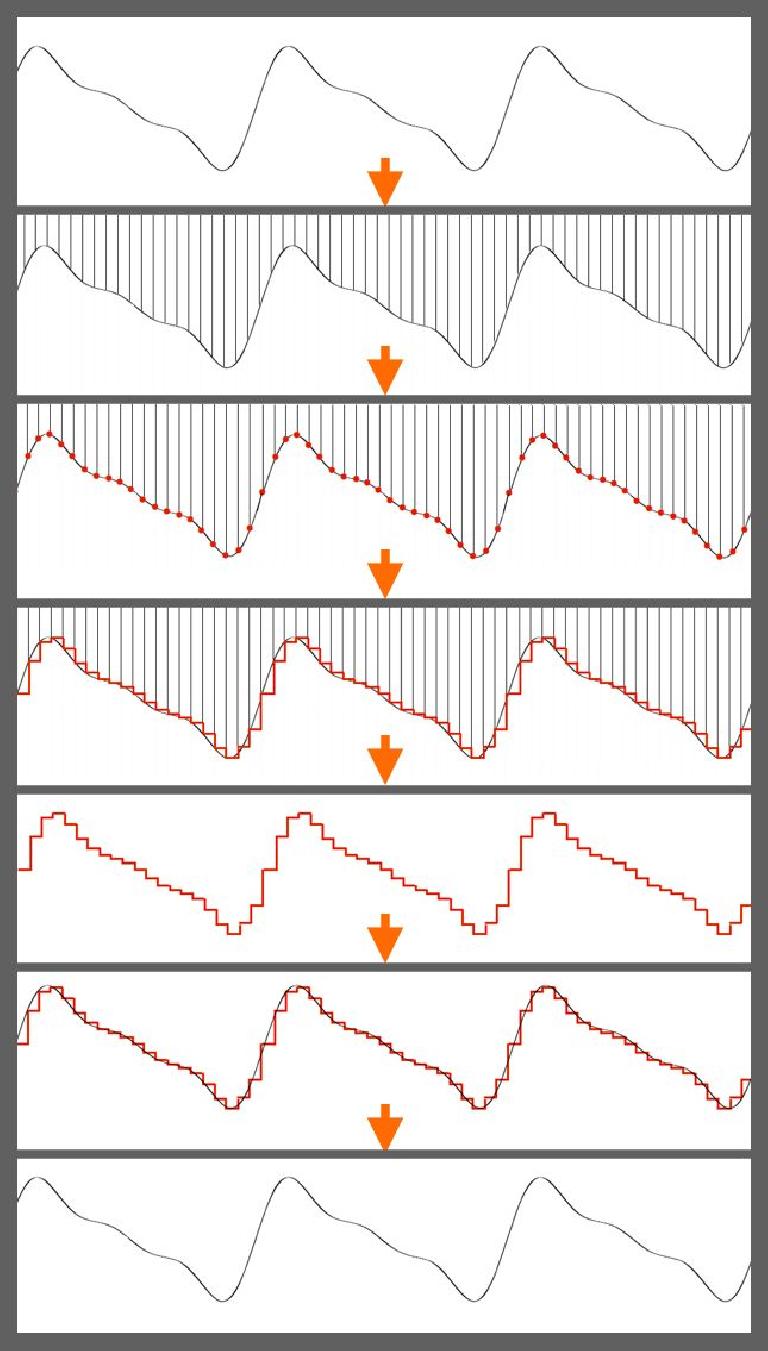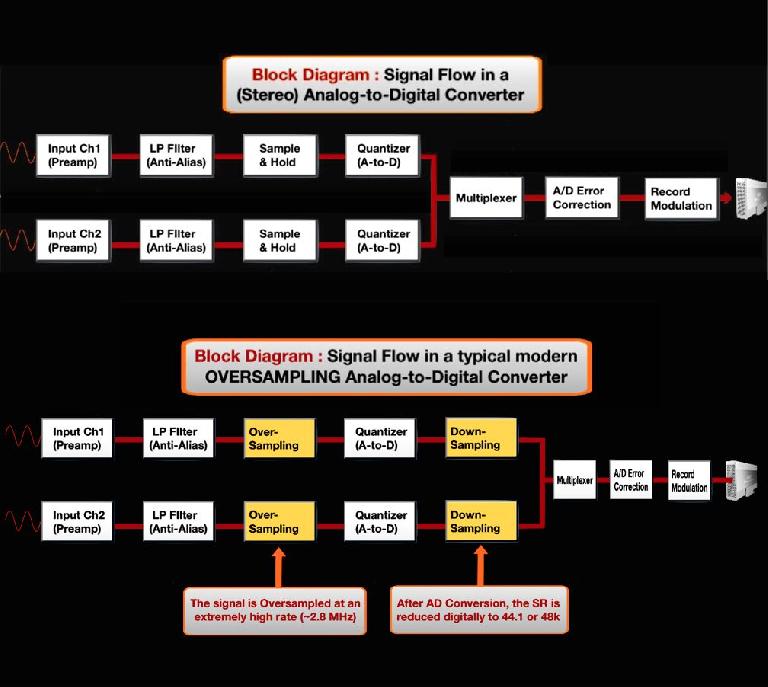Um dos debates mais controversos nos centros da indústria de áudio em torno de resolução de áudio digital. É CD-qualidade ainda é boa o suficiente, ou todos devem som digital aderir às opções de maior res que estão agora disponíveis? Ok, alerta de spoiler
The (Very Simplified) Basics
Os dois referenciais de qualidade de áudio digital são Sample Rate e Bit resolução. Baixa Taxa de Amostra
Durante anos, esses dois benchmarks foram padronizados. CD
Please Sir, May I Have Some More..
Mas se o padrão original (s) reuniu-se (pelo menos perceptivelmente) os requisitos teóricos, porque a chamada para resoluções mais altas? É realmente necessário para fazer uso das resoluções mais altas disponíveis atualmente Bit
A Bit of This, a Bit of That
Primeiro, a parte mais fácil
No entanto, a diferença não é tão grande como se poderia esperar
E, no entanto, toda a gente (pelo menos todos os prós) ficha 24 bit! Por quê? Bem, eu acho que a resposta é, por que não? Resolução de 24 bits doesn
Mas o que sobre todo o zumbido sobre
Sample This
Quando se trata de os disponíveis superior Amostragem Tarifas (88.2k, 96K, 176.4k, 192k), há
Teoria de áudio digital é realmente muito elegante
Mas para alcançar este objetivo sem um artefato audível
Conversores digitais modernas têm, há anos, na verdade, amostrado a uma taxa mais alta, há muito tempo eliminando a necessidade de esses filtros brickwall problemáticos. Mas a taxa da amostra do arquivo de áudio digital resultante pode ainda ser 44.1k ou 48k, porque as frequências mais altas de áudio amostrados
Mas quando você faz uma gravação 96k, você
The Ultrasonic Conundrum
Bem, esta é uma daquelas áreas onde pessoas boas
Golden Ears..?
Medições de teste pode
Wrap-Up
Em última análise, as pessoas vão continuar a usar o que quer que eles se sentem resoluções são apropriadas. Embora praticamente todos os projetos de nível profissional são de 24 bits, as taxas de amostragem gama escolhidos a partir do 44.1k mais tradicional e 48k para 96k, e às vezes até 192k (embora alguns engenheiros bem respeitados sentir que 192k é mais hype do que qualquer coisa).
Às vezes, a escolha é feita para você






 © 2024 Ask.Audio
A NonLinear Educating Company
© 2024 Ask.Audio
A NonLinear Educating Company
Discussion
I have actually only done the first part with most of my (soft) synths and have been surprised how well it sounds with synth sources at at 88..2 in a 44.1 project.
You're right, software instruments are one application where oversampling can potentially make a more noticeable difference—especially with creative applications that involve more extreme sample manipulation, which can sometimes clearly benefit from higher sampling rates. I didn't get into that for two reasons—the article was intended to be focused on playback/distribution more than processing, and it was already long and technical enough (especially before I edited it down!).. ;-)
As I've always understand it, most plug-ins that oversample (for maximum clarity with certain kinds of intensive processing, like some modeling emulations) will be fine doing that internally (if you enable it), regardless of the session settings..
I also didn't get into the whole issue of people listening to all those pristine hi-res audio productions as MP3s/MP4s, but I guess that's an issue for another day.. ;-)
Cheers,
Joe
Want to join the discussion?
Create an account or login to get started!